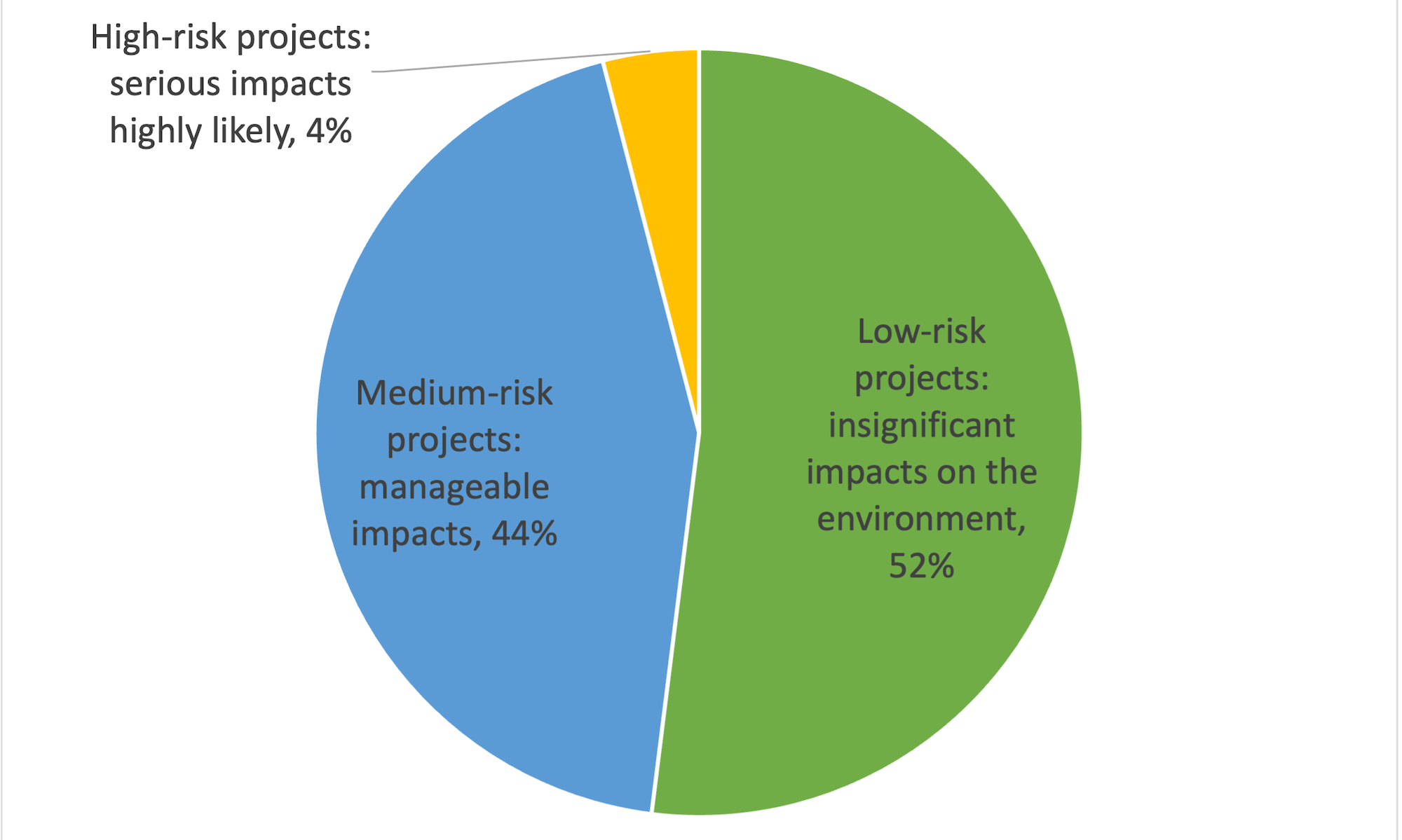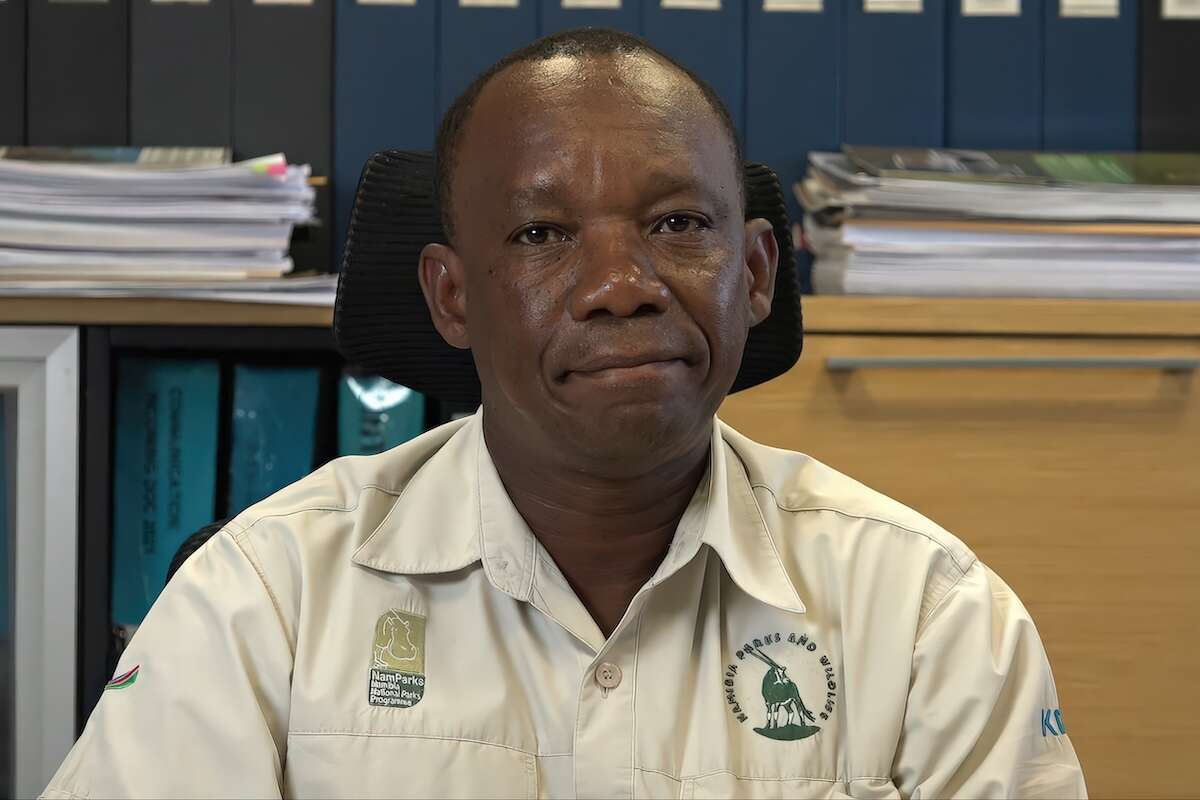
Are Environmental Impact Assessments Working in Namibia?
29th October 2024
29th October 2024
There are many acronyms used in this article. Hovering your mouse pointer over any acronym will reveal its meaning.
In an ideal world the Environmental Impact Assessment (EIA) process would ensure that any development project in Namibia is socially just and environmentally sustainable. In reality, the whole process appears to be a box-checking exercise that serves a wealthy and well-connected few at the expense of the majority of Namibians and our environment.
How do we know that EIAs are not working in Namibia? Our assessment is based on evidence from tracking all EIAs in Namibia since May 2023 on the EIA Tracker. The EIA Tracker logs all EIAs that are registered with the Office of the Environmental Commissioner (OEC) in the Department of Environmental Affairs (DEA) and places all the relevant information on the web for easy access – forever. If you want to check out the environmental details behind a new or existing project since May 2023, or what conditions were set in the Environmental Management Plan (EMP), the EIA Tracker can help you. Details on older projects between 2019 and May 2023 are available from Namibia's Environmental Information Service (EIS).
Without the Tracker you can only get this information from the DEA for a short period when the EIA is active. Thereafter the DEA deliberately makes it difficult for anyone trying to find out more about an EIA. This is a significant concern, because the EMP sets out how the project should be run and what it has undertaken to do to mitigate social and environmental impacts. This information is hidden from the public. As the OEC seldom inspects projects, there is no accountability for EMPs being implemented.
How EIAs should work versus how EIAs often happen in Namibia
| Ideal EIA | Typical Namibian EIA |
|---|---|
| Offers practical guidance in order to make the development socially just and environmentally sustainable. | A box-ticking exercise to get an Environmental Clearance Certificate (ECC). |
| Welcomes comments and concerns from Interested and Affected Parties (IAPs), which improve the outcome of an EIA. | Often hidden from public scrutiny, while public inputs are downplayed or ignored. |
| The Environmental Assessment Practitioner (EAP) is competent and responsible, and open to information that will improve the social and environmental outcomes of the development. | No qualification is required for EAPs, and young entrepreneurs see EIAs as an easy business opportunity. EAPs are eager to please the developer and willing to bend rules and cut corners to do so. |
| The government department overseeing EIAs is efficient, and intent on achieving the best outcome from the EIA process. | The government department overseeing EIAs is slow, opaque and unresponsive to suggestions. |

The EIA Tracker provides information on every project that is applying for Environmental Clearance, based on the Background Information Document (BID) provided by the relevant Practitioner. Based on this information each project is classified as high, medium or low risk. Although any member of the public has the legal right to access any BID, our attempts to do so have been an eye-opening exercise! In many cases, EAPs unlawfully refuse to provide the BID. These same Practitioners are often associated with placing EIA adverts (another legal requirement) in obscure places, such as the tiny print of the classified ads section of a newspaper. These are deliberate measures by some EAPs to keep the EIA out of the public's sight. The EIA Tracker has reported them to the Environmental Commissioner – with no response.

The projects we assess as high risk are those which carry significant environmental and social issues, such as large mines and dams. They require a thorough EIA, usually with specialist studies on water, biodiversity, social issues, archaeological impacts and so on. Medium-risk projects carry slightly lower risks for the environment and people, such as possible pollution and risks to water resources that are manageable with the appropriate mitigations. These more common projects include geological exploration (since every Exclusive Prospecting License, EPL, requires an ECC before it can commence activities), small mines and powerlines. Low risk projects carry generally insignificant impacts for people and the environment. Examples include rezoning in urban areas, fuel stations, small earth dams, most lodges and solar farms that are outside sensitive areas.
Of the 1,189 EIAs registered with the DEA in the 15-month period up to July 2024, 52% were low-risk projects. These relatively trivial EIAs occupy a large proportion of the DEA's effort and time, each taking about three months from submission of the EIA to issuance of the ECC. In our opinion, this is wasted effort. They could more efficiently be handled through a simplified checklist, speeding up the process and freeing up time for more important matters, where more thorough due diligence on significant EIAs is needed.


An example of an EIA that deserved greater scrutiny and which should not have been given the go-ahead, was an EPL in a prime tourism area near Khorixas. The BID drew attention to the presence of rhinos in the area, which prompted Save the Rhino Trust and local lodge owners to raise concerns against the project. The EAP fraudulently stated that the risks to biodiversity were low. The ECC was issued despite this clear irregularity and major negative impacts, and the geological exploration project has gone ahead. This and many other similar examples reinforce the view held by many that the EIA process cannot be trusted, and that it is at best just an administrative procedure to tick the ECC box, or at worst, an area of growing concern about corruption.
The EIA Tracker team met with the Environmental Commissioner and his senior staff to discuss these problems and made several recommendations, including the need to establish in law a professional body for EAPs, like those for earth sciences, medical and engineering professions. Such an organisation – the Environmental Assessment Practitioners Association of Namibia (EAPAN) – has been in existence for a decade as a voluntary association, but it gets little recognition and no support from the DEA. EAPAN ensures that its members have the required qualifications and experience, and abide by a strong code of professional conduct. Proponents of projects looking for professional EAP services would be advised to approach members of EAPAN.
![]()
At this stage, only half (48) of Namibia's 93 EAPs are registered with EAPAN, and only one third (337 out of 1,189) EIAs registered in the past 15 months were conducted by EAPAN-registered EAPs. The Environmental Commissioner has promised to give priority to a professional body for EAPs, but so far, nothing. This relatively simple step would ensure that only members of EAPAN would be allowed to prepare EIAs, thus eliminating unscrupulous and unqualified individuals from the pool of potential practitioners that developers can employ.

The EIA Tracker is one step towards improving transparency of the EIA process by allowing affected parties to contribute information on high-impact projects and gain access to documents that are not provided by the DEA. A democratic and transparent EIA process is in the interest of improving overall environmental management. When the public is fully engaged with development projects, those projects are more likely to have sustainable and socially acceptable outcomes. This is the ultimate objective of the Environmental Management Act.
The Tracker has shown us that many aspects of the EIA process are currently failing in Namibia. Our message to the OEC, based on the solid facts revealed by the EIA Tracker, shouts out: Clean up your act!
We call on the Environmental Commissioner to implement the Environmental Management Act in a professional manner as part of his duty to work on behalf of all Namibians.


The EIA Tracker is a project run by the Namibian Environment and Wildlife Society (NEWS) with funding from the Namibian Chamber of Environment (NCE). Sincere thanks to NCE for the ongoing financial support and suggestions.
For articles on similar topics, please click one of the following options:
For more great articles from Conservation Namibia see below...
Conservation Namibia brought to you by:
We use cookies to monitor site usage and to help improve it. See our Privacy Policy for details. By continuing to use the site, you acknowledge acceptance of our policy.











